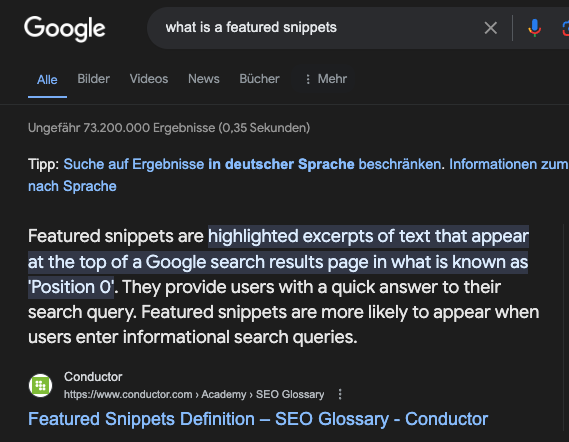Beyond Keywords: Unlocking Google's Secret Garden
So, you've mastered the language of keywords and are whipping up delicious content. But hold your horses, SEO adventurer! We're about to embark on a deeper expedition into the hidden corners of Google's search engine, uncovering advanced strategies to truly climb the rankings like a mountain goat in a tutu.
Buckle up, and let's explore!
This is the final chapter of your 5-part series on making your service-based business visible to all! Make sure to check out the previous chapters if you just arrived here.
Chapter 1: Claim Your Digital Throne: Google Business Profile
Chapter 2: What is Google Business Profile?
Chapter 3: Speak the Language of Google (SEO)
Chapter 4: Freshness is Key: Keeping Your Website Lively
Chapter 5: Beyond Keywords: Unlocking Google's Secret Garden
OPTIMIZE FOR
SEARCH:
GET FOUND BY YOUR IDEAL CLIENTS
Unleash the power of search engine optimization (SEO) and attract more clients to your business. Discover expert strategies to optimize for Google search results.
Now let's get our hands dirty
In the Search Engine Optimization (SEO) world, keywords often steal the limelight. They are, undoubtedly, a significant factor that influences your website's visibility on search engines like Google. But is there more to SEO than just strategically placing keywords? Absolutely, and that's what this comprehensive guide is all about.
Welcome to Chapter 5: Beyond Keywords. This part of our guide will take you on an enlightening journey through the less-treaded paths of SEO. We delve deeper into the intricacies of technical SEO, ethical link-building, content marketing strategies, and local SEO tactics. We also underline the importance of tracking and analyzing your SEO efforts for continuous improvement.
So, buckle up and get ready to unlock the secret garden of Google discoverability.
Technical Tweaks for Turbocharged Speed
Picture this: you're standing in an endlessly long line, waiting to get a slice of your favorite pizza. The wait seems to stretch on forever, each passing minute testing your patience. The frustration you feel in that moment - that's exactly how visitors feel when they come across slow websites.
Not just visitors—even Google isn't a fan of sluggish performance! You must ensure your website loads faster than a hyperactive squirrel that just had a double shot of espresso. You may wonder, how can you achieve this? The answer lies in optimized images, lean code, and a robust hosting provider—the trifecta for achieving lightning speed.
How long will you wait for a pizza?
How long will you wait for a website to load??
How can you know for sure if your website is up to speed? That's where tools like Google PageSpeed Insights come in. Google PageSpeed Insights is a free tool that measures the performance of a page on both mobile and desktop devices. It fetches the URL twice, once with a mobile user-agent and once with a desktop-user agent.
The tool then analyzes the content of your web page and generates suggestions to make the page faster. Consider it your secret decoder ring. It analyzes your website and suggests improvements, providing a roadmap to enhance your website's performance.
Remember, in the digital realm, speed isn't just important, it's king (or queen). A slow-loading website can be the difference between a visitor becoming a customer or bouncing off to your competitor. So, make sure your website isn't just a site, but a lightning-fast experience.
Mobile Magic: Shrinking Screens, Big Opportunities
Nowadays, everyone is attached to their mobile devices. Given this reality, it is crucial to ensure that your website not only looks appealing but also functions flawlessly on all screen sizes. This can be achieved through the implementation of responsive design.
Responsive design is a web design approach aimed at creating sites that provide an optimal viewing experience—easy reading and navigation with a minimum of resizing, panning, and scrolling—across a wide range of devices, from desktop computer monitors to mobile phones.
In other words, your website will automatically adjust and adapt to any screen size, including smartphones, tablets, and even smartwatches (because in this rapidly evolving technological landscape, why not?).
Note: look at your website statistics to see from which device most visitors view your site. It might surprise you!
To ensure that your website is mobile-friendly, Google PageSpeed can be a valuable tool. This handy ally will run a series of checks to determine if your website meets the necessary standards for mobile usability. It is important to remember that a mobile-friendly website is not just beneficial for the users but also the website's search engine ranking.
A website that provides a great mobile experience will lead to happy mobile users. Happy users are more likely to engage with your website and share it with others, which in turn, pleases Google. And a happy Google is more likely to reward you with higher search engine rankings.
So, investing time and effort in making your website mobile-friendly is a win-win situation for everyone involved!
Structured Data: Speaking Google's Language
Ever seen those fancy snippets in search results with extra information like star ratings or author bios? That's the power of structured data, basically telling Google exactly what your content is about in their language.
Example of a ‘featured snippet’
Think of it as a cheat sheet for search engines, helping them understand your content better and potentially displaying it more prominently. It's not magic, but it might feel like it!
Google will be the first to tell you that they do not understand websites.
There are many techniques you can use to make the information on your website easier for Google to understand. Writing clear content that is detailed on a single long-tail keyword can improve your chances of getting featured.
This is your cheatsheet to improve Google and searches results
Another is providing Google with formatted insights about you and your page. This is where structured data comes into play. Google will be the first to tell you that they do not understand websites. They only ‘see’ the data on the page and are included with the page. This structured data is not seen on the page but is encoded within the page.
To learn more about structured data and how to add it to your site, check out Google’s help site.
https://developers.google.com/search/docs/appearance/structured-data/intro-structured-data
Example of ‘structured data’
A note on Squarespace and Structured Data
This website is hosted on Squarespace.
Squarespace doesn't offer built-in structured data implementation like some other Content Management Systems (CMS). However, there are a couple of ways you can add structured data to your Squarespace website:
1. Manual Code Injection:
This method involves adding the structured data code directly into the HTML of your Squarespace page. Here's what you need to do:
Generate the Structured Data Code: Use Google's Search Console Data Markup Helper tool (https://www.google.com/webmasters/markup-helper/) to generate the specific code for your content (e.g., recipe schema for your cookie recipe).
Copy and Paste the Code: In your Squarespace editor, navigate to the specific page where you want to add the structured data. Go to the "Settings" tab and look for the "Advanced" section. You should find a code injection field where you can paste the generated structured data code.
Save and Test: After pasting the code, save your changes and use Google's Rich Results Test tool (https://search.google.com/search-console/about) to ensure the structured data is implemented correctly.
Important Note: This method requires some basic understanding of HTML and code. If you're not comfortable with code, consider finding assistance.
"I WANT MORE SERVICE-BASED COMPANIES TO BE SUCCESSFUL WITH THEIR ONLINE ACTIVITIES!"
Backlinks: The Web of Trust & Authority
Imagine getting a thumbs-up from a respected friend – that's what backlinks are in the SEO world. When other websites link to yours, it tells Google you're trustworthy and worth paying attention to.
Quality matters more than quantity!
Focus on earning backlinks naturally through valuable content like guest blogging, infographics, or simply being awesome. Collaborate with complementary businesses, join online communities, and share your expertise – all these can lead to organic backlinks that boost your ranking like a rocket launch. Avoid shady tactics like buying links, though – Google frowns upon those like a grumpy cat!
Building a network of quality backlinks is often considered the most challenging aspect of SEO. This process is typically slow and requires consistent effort, patience, and strategic planning. It's not just about increasing the number of backlinks, but about ensuring that those backlinks are relevant, high-quality, and come from authoritative sources.
Despite the challenges, the effort put into building a robust backlink profile can significantly enhance your website's SEO performance and online visibility.
Content Marketing Mastery: Beyond Just Words
Remember, SEO isn't just about technical mumbo jumbo – it's all about connecting with your audience. So, get to know them inside and out! What are their needs, interests, and pain points? Craft content that speaks directly to them, offering solutions, unique perspectives, and a healthy dose of entertainment.
Don't be afraid to mix things up – blog posts, videos, infographics, case studies – the format doesn't matter as long as the content is valuable and engaging. Remember, shareable content is happy content, so make it easy for people to spread the word on social media.
Jump back to chapter 4 of this series to read more on keeping your website fresh!
Local SEO: Ruling Your Neighborhood Search
If you have a local business, listen up! Claim and optimize your Google Business Profile. Fill it with accurate information, stunning photos, and glowing reviews, and keep it updated like a freshly baked pie. Don't forget to build citations by listing your business in relevant directories and local listings.
Chapter 1 of this series was all about how to best set up your GBP. Check it out for a refresher!
Get involved in your community, sponsor local events, network with other businesses – show Google you're a local player who cares. Finally, target local keywords throughout your website and meta descriptions, so people searching for "best pizza near me" find your delicious pizzeria first. Remember, local SEO is all about being the king (or queen) of your digital neighborhood.
I covered SEO in more detail in chapter 4 so have a look!
Track & Analyze: Don't Fly Blind
Just like any good adventurer, keep track of your progress! Monitor your local search ranking using tools like Google Business Profile Insights. See what's working, and what's not, and adjust your strategies accordingly. Remember, SEO is a journey, not a destination, so continuous learning and refinement are key to conquering the Google mountain.
By following these advanced strategies, you'll move beyond just keywords and unlock the true potential of SEO. Remember, with dedication, a dash of creativity, and a willingness to learn, you can become the SEO champion your website deserves!
Don't forget to celebrate your victories along the way – every step up the ladder.
TL;DR
This chapter explores advanced strategies for improving Google discoverability beyond just keywords.
It covers technical SEO basics, backlinks and ethical link building, content marketing strategies, local SEO specific strategies, and the importance of tracking and analyzing results.
By implementing these strategies, you can unlock the true potential of SEO and climb the search engine rankings.
👆🏻 Back to Top 👆🏻





















